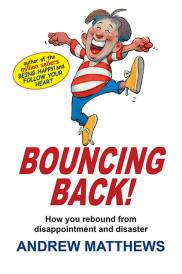Roger Boot QR Prescriptions Codes

Roger Boot QR Prescriptions Codes
Individual QR codes are being launched on prescriptions throughout Australia so that people can pre-order their scripts for pick up from a pharmacy whenever they want.
This means that - for the first time - people all around Australia can now organise their prescription medicines ahead via their smart phone. This will provide a significant benefit to people who live in regional areas, those who are socially isolated or unwell, along with people with chronic health needs. By submitting their script via their smart phone, Australians will only need to make one trip to the pharmacy to pick up their medication instead of needing to drop the script off as well.
Great for anybody who is busy and wants to save time waiting whilst their medicines are dispensed - busy young people, office workers, parents with young kids - and so on. But, of course, people can continue to visit the pharmacy to drop off their script if they prefer.
The use of QR codes means that people's individual medicines information goes straight into the existing eHealth system (which the vast majority of prescriptions dispensed in Australia go through), which is designed to improve patient safety through more accurate and more efficient dispensing information.
Interview with Roger Boot, eRx Express
Question: Can you explain the process behind the individual QR codes are being launched on prescriptions?
Roger Boot: The launch of QR codes was to allow people to use mobiles to connect with pharmacy in the same way that they do with friends and other services, such as banking.
GPs and pharmacies have been using electronic scripts (eScripts) since 2009 as a means of sharing patient history and medicine information (only where a patient opts in to an eHealth record). The major benefit of this is that it improves patient safety by creating more accurate dispensing, and by creating the ability for the sharing of information between health professionals who look after that patient. More on the benefits below, questions 3 and 4.
The QR codes themselves were rolled out in collaboration between medical and pharmacy IT companies, who integrated the QR codes into their software. The QR codes then became automatically available to doctors as part of standard software updates (doctors do these regularly).
Question: How long has this process been in testing?
Roger Boot: Doctors and pharmacists have been using eScripts through eRx Script Exchange since 2009, and the majority of GPs and pharmacies in Australia now use eRx to send their scripts electronically. Now with the launch of QR codes the network has been extended to patients so they can enjoy added convenience, as well as the existing safety and security of eRx eScripts.
In terms of the testing of QR codes, this has been in development and testing in medical software since October last year. Each software company has worked with eRx Express to integrate the QR codes into their software, and then on testing before rolling out the software to doctors and specialists.
Question: What are the benefits of this process for the individual?
Roger Boot: The major benefits for individuals are continued improvements in patient safety, reduced waiting times, and a new level of convenience for people.
Being able to send scripts to a pharmacy from a smart phone makes it much easier for people to manage their medicines. People can pre-order scripts for pick up as soon as they leave the GP (or any time that they like), and pick them up at a time that suits.
This makes it a lot easier for people who are busy, or juggling lots of different demands. For example, people who work, parents of young children, people who need a lot of medicines, people who live a distance away from a pharmacy.
In our survey, mums told us that the main reason they would use the app was because it was time saving, whereas for women in general, the main reason was convenience. Mums collect the majority of scripts on behalf of the household, and we know that these women are often juggling looking after children with many commitments, like work, school pick ups and drop offs, friendships, managing the house, and sick children, so being able to pick up script medicines at a time that suits is a big help. It means that mums with young children in tow can avoid waiting whilst their scripts are dispensed.
It's great for people working, because they can avoid busy peak times like lunch hours. For people who use a lot of medicines, it can be quite time consuming to sort out your medicines, and being able to do so at home is less stressful. It's also great for people who need the support of a carer to pick up their medicines.
 Question: How will this process benefit the pharmacy and eHealth system?
Question: How will this process benefit the pharmacy and eHealth system? Roger Boot: The major benefit for pharmacy and eHealth is in improving patient safety whilst also continuing to protect people's privacy and security in terms of their medicines information.
This is a significant issue, both in terms of individual patient safety, and in terms of the health care system. Every year, thousands of people enter hospital as a result of mix-ups with medicines, costing the Australian health system $380 million every year (according to Deloittes).
The launch of QR codes means that when people use their mobile phones to pre-order their scripts, their medicines information goes straight into their eHealth record. There are a number of important safety benefits here. Pharmacists don't have to re-type medicines or patient information, which means that it's faster and more accurate than re-typing, providing greater confidence that the information is exactly as the doctor intended.
A second benefit is that all of a patient's health care providers then have access to that information electronically, so doctors and other specialists can make decisions based on the most accurate medicines information. If somebody ends up in the emergency department at a hospital, those doctors will be able to see what other medicines an individual is on, and this can help prevent adverse reactions.
QR codes can also help pharmacy reduce waiting times for people. Like many businesses, pharmacies tend to have peak times, like lunchtimes, after school, after work, and paydays. The big difference with pre-ordering of scripts is that pharmacies can pre-prepare scripts for people, reducing time for people waiting in queues, and helping pharmacies spread the workload across the day. This means that pharmacists can then spend more time helping people with their wider healthcare needs.
Question: Can you talk us through the process of submitting a script via a smart phone?
Roger Boot: Once people have the app eRx Express on their phone, it's three easy steps.
Step 1: You simply turn on the app, push -Scan and Submit', hold your phone camera above the QR code on your script (the eRx barcode will also work), and it automatically scans the code.
Step 2: You then choose your pharmacy and time and date for pick up. You can also include any messages for the pharmacy.
Step 3: Then you just push -submit'
Question: How do these codes ensure individual medicines information goes straight into the existing eHealth system?
Roger Boot: The eRx Express app is part of eRx Script Exchange, which is Australia's first national network to allow GPs and pharmacists to safely and securely exchange patient information, currently connecting 20,000 GPs and 4,300 pharmacies. This safe and secure sharing of accurate medicines information between GPs and pharmacies forms the backbone of eHealth records.
This means that when patients scan the QR code on this prescription, this takes the pharmacist to a secure link containing the patient's medicine information for that script, which is then automatically fed into eHealth networks. (This only happens if the patient has opted in for an eHealth record).
This contributes to the building up of individual health records, and passes on the immediate benefits of improving patient safety as a result of greater accuracy, and making up-to-date and accurate information available to a person's entire health care team.
Question: Can you talk us through the survey results?
Roger Boot: Our survey was to explore people's thoughts about eHealth in general, and about using mobile apps for health reasons. Preliminary results show that improving patient safety and convenience are the two most significant factors driving people to use eHealth and mobile apps for ordering their scripts and managing their medicines, with:
32% of people citing improved patient safety as the most important driver for eHealth and mobile app use
48% of respondents saying their prescriptions take 5-10 minutes to dispense; and 28% saying that they take 10-20 minutes
the two most common motivations described for using mobile apps to order scripts being convenience (23%) and saving time (16%).
Full survey results will be available in late April-early May.
Question: What's next in script development?
Roger Boot: The next stage is for additional features to help with managing medicines. For example, getting reminders about when your repeats are due, when you need to return to the doctor, and reminders about when to take your medicine, and so on.
Interview by Brooke Hunter
MORE
- Chiropractic Myths & Truths
- Gerard Fogarty Arthritis and Knee Replacement...
- Kym Ellery The ELLERY Eyewear Collection Interview
- Dr Ross Walker The Real Modern Killers Interview
- Shelly Horton Hay Fever Help Interview
- Sebastian VanVeenendaal Royal Rehab's Beach...
- Abigail Koch Family Private Health Insurance...
- Monique Cashion Organic Awareness Month Interview
- Dr Bill Harris Omega-3s Interview
- The Top Ten Health Myths Busted
- Professor Bolin IBD Management a Life-Long...
- Anthia Koullouros Best Cold and Flu Defence...
- Leprosy in NSW
- Julie-Anne Mitchell Go Red for Women Healthy...
- Insight into Chronic Disease Hospitalisations...
- Jeff Chan Mobile Phone Allergies Interview
- How to Conquer Bad Winter Health Habits
- Bad Cholesterol Behind Cancer Spreading In Body
- New Screening Test Recommended To Help Prevent...
- Support For The Rural Nurse Workforce A...
- Kathy Nielsen Ovarian Cancer Australia National...



